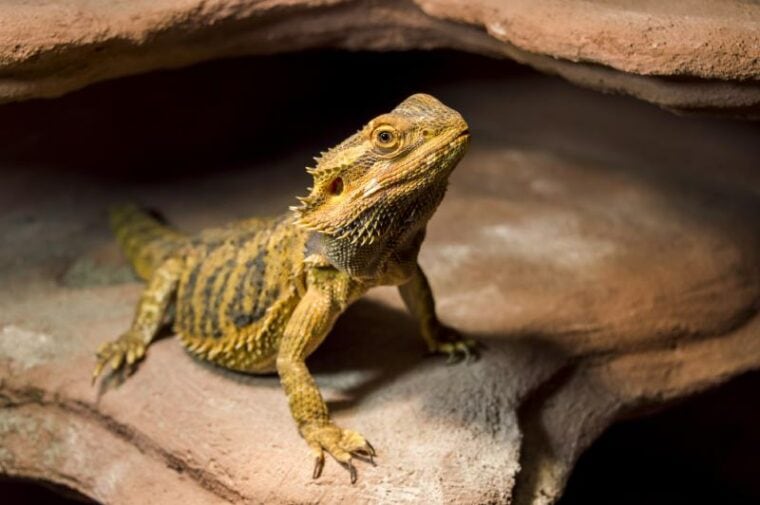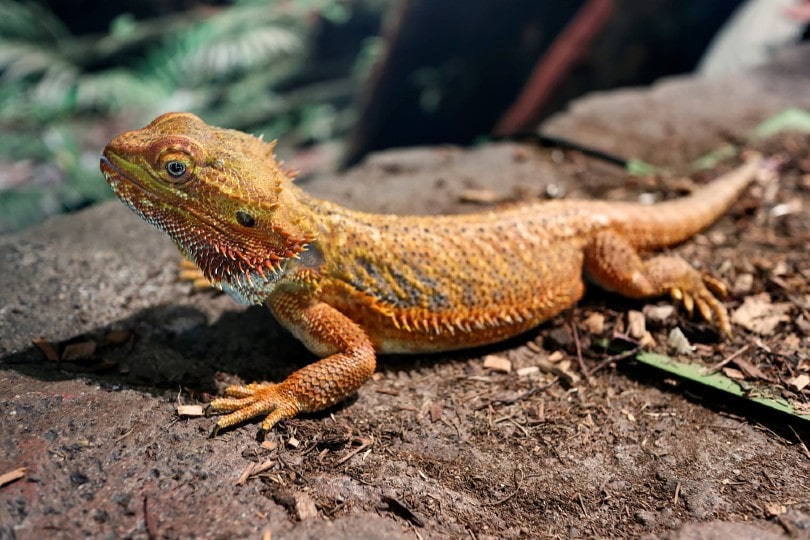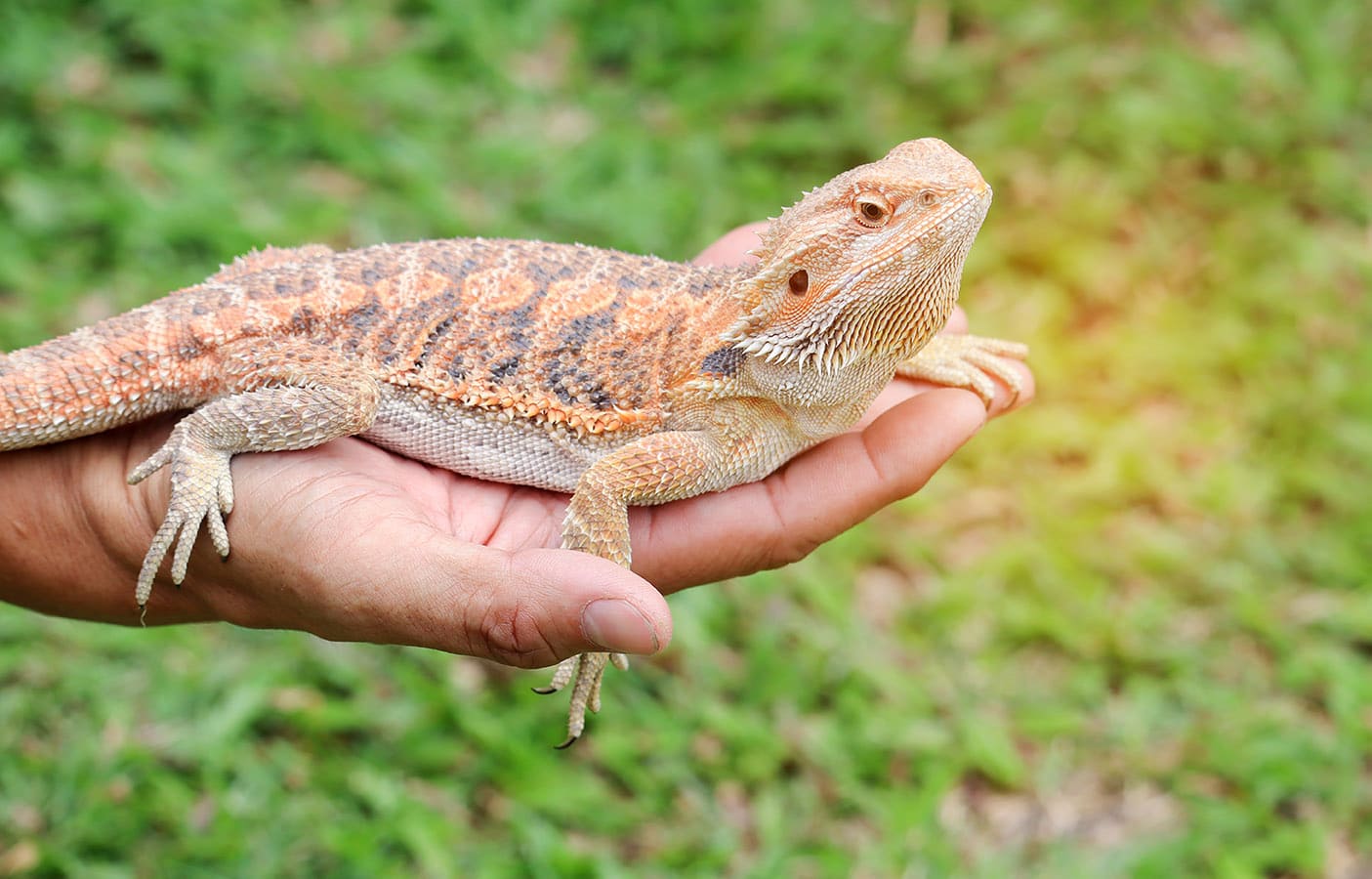
Bearded Dragons are native to Australia. They are spread across most of the continent except the northern and eastern shores. They’re most commonly found in arid and semi-arid regions, including woodlands, savannas, and deserts.
Throughout the 1990s, Bearded Dragons have gained popularity as pets, and many have been produced in captivity. Nonetheless, Australia still has wild populations of Bearded Dragons. Today, most Bearded Dragons kept as pets were bred in captivity.
The inland Bearded Dragon (Pogona vitticeps), the most prevalent species kept in captivity, and the coastal Bearded Dragon are two of the many species of Bearded Dragons (Pogona barbata). Other species include the western Bearded Dragon (Pogona minor minor), the dwarf Bearded Dragon (Pogona minor minima), and the central Bearded Dragon (Pogona henrylawsoni). All Bearded Dragon species are native to Australia, though not all are kept in captivity.
Are Bearded Dragons Found in the Wild?
Today, most of us know of Bearded Dragons in their role as exotic pets. However, there are many Bearded Dragons still in the wild today. They aren’t solely domesticated species like many other pets. Bearded Dragons must be carefully socialized with people, or they can be pretty wild—even when bred in captivity.
Except for the northern and eastern coasts, Bearded Dragons can be found in the wild almost anywhere on the Australian continent. They live in various settings, including deserts, savannas, and forests. They have a reputation for being extremely flexible and can live in environments with scarce water and food supplies.
While widespread in the wild, Bearded Dragons are nonetheless subject to various dangers, such as habitat loss brought on by human development and agriculture and predation by introduced animals like foxes and feral cats. Bearded Dragon habitats and wild populations are the subjects of ongoing conservation initiatives.
Luckily, their population is pretty stable. Therefore, they aren’t in danger of being extinct any time soon.

Bearded Dragon’s Native Habitat
Bearded Dragons are found in very specific areas of Australia. They aren’t found everywhere in Australia, though they are pretty widespread. They aren’t rare lizards by any means.
Generally, these dragons are found in arid climates, which are hot and dry. They can tolerate a range of temperatures, though. They’re known to be quite flexible, which allows their range to be pretty wide. However, they need access to the sun and shade to control their body temperature. Often, they’re found in rocky areas, where they can hide in crevices and bask on rocks as needed. As cold-blooded animals, they use rocks to thermoregulate.
Bearded Dragons don’t need vegetation to survive and often don’t forage or use plant coverage for protection. Therefore, they’re often found in areas without much vegetation. However, when available, they can consume some plant material, like leaves and fruit.
These lizards sometimes burrow in sand or soil, so areas with loose soil are often preferred. This isn’t extremely common and not a behavior all Bearded Dragons exhibit. However, some may burrow up to several feet into the soil.
Bearded Dragons don’t need tons of water and can go a long time without water. In captivity, they often get much of their water from vegetation. In the wild, they may get their water from dew, water, or rainfall.
Are Bearded Dragons Bred in Captivity?
Most Bearded Dragons found as pets today were bred in captivity. Once upon a time, Bearded Dragons were captured in the wild and then sold. However, breeding in captivity became more popular in the 1990s, and it is now the primary way these Bearded Dragons are sourced in the pet trade.
Captive breeding has many advantages over catching Bearded Dragons in the wild, such as:
1. Health & disease resistance
Bearded Dragons bred in captivity are often healthier than wild-caught specimens, as they haven’t been exposed to as many diseases or parasites. When caught in the wild, you never know what diseases the animal has been exposed to. Furthermore, a wild-caught specimen can be extremely stressed after capture (as it is all new to them), which can cause increased diseases.
Bearded Dragons caught in the wild are much more socialized than wild-caught lizards. They’ve been around people in captivity their whole life, so they’re much less likely to be fearful. Furthermore, they’re much more tolerant of handling. Hand-fed Bearded Dragons are particularly tame. Unlike most pets, Bearded Dragons must be tamed individually.

3. Known genetic history
When you breed a Bearded Dragon, you know its genetic history. A Bearded Dragon will likely be like its parents, allowing breeders to predict how the lizard may act and look. Rare patterns and colors can be promoted this way while capturing Dragons in the wild is completely random.
4. Availability
Humans have gotten fairly good at breeding Bearded Dragons in captivity. Therefore, captive-bred Bearded Dragons are available year-round without much difficulty. However, Bearded Dragons are only available seasonally when caught in the wild. Furthermore, certain color morphs may not be available in wild-caught populations.

5. Reduced impact on wild populations
Because captive breeding doesn’t require removing lizards from the wild, it doesn’t impact wild populations. Some laws surround capturing Bearded Dragons today, as it can result in over-harvesting the local population.
In most cases, captive-bred Bearded Dragons are the better option for pet owners. Most Bearded Dragons available as pets today didn’t originate from Australia (unless you live in Australia). Instead, they were likely captive-bred.
Conclusion
Bearded Dragons are native to Australia, where they live on most of the continent. They usually inhabit arid and semi-arid areas, though they are extremely flexible and can survive in suboptimal conditions.
It was likely captive-bred if you have a Bearded Dragon as a pet. Very few captive Bearded Dragons are caught in the wild today, and most captive Bearded Dragons aren’t from Australia themselves.
However, wild populations still exist. You can still find wild Bearded Dragons running around in Australia today.
Many species are native to Australia, but not all of these are kept as pets. There aren’t any species of Bearded Dragons found outside of Australia.
Featured Image Credit: Robert Keresztes, Shutterstock








